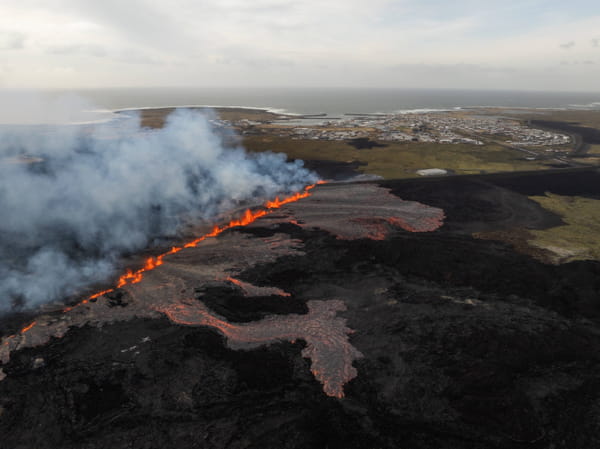Images have shown impressive quantities of magma gushing from the ground.
A real fire show has embraced part of Iceland this Tuesday, April 1, 2025. The eruption comes from the craters of Sundhnúksgígar located on the Reykjanes peninsula, a volcanic region yet asleep for 800 years which had started to wake up in 2021. The volcanic eruption started around 6:30 am with several earthquakes potentially triggered by a flash. The opening of a volcanic crack around 9:45 am, which quickly spread to the south. “”The crack is now 1,200 meters long and has crossed the protective barrier north of the Grindavík port city: it continues to expand and it is not excluded that it continues to open south“Said the Icelandic Meteorological Office in a press release.
With more than 30 active volcanoes, the country is “accustomed” to these kinds of situations. However, this eruption is “much more importante “that previous events because”The magma accumulates underground for several months “reports to Mailonline Dr Agust Gudmundsson, geologist in the Department of Earth Sciences in Royal Holloway (University of London). Photos and videos have shown Impressive quantities of magma gushing from the ground, forming a long curtain of “lava fountains” extending on the crack.


The 4,000 inhabitants of Grindavík, as well as the neighboring areas have been evacuated. The Blue Lagoon, a major tourist attraction of the country, has also been closed and customers have been placed safe in other hotels. Despite this impressive eruption, Keflavík international airport is operating normally, and there is no immediate threat to the general population. Emergency services remain alert. Icelandic residents and travelers are also advised to follow updates and respect the evacuation instructions.
If it is difficult to predict the duration of this eruption – from a few days to a few weeks – the authorities and scientists closely monitor its evolution, seismic activity and significant magma movements. As a reminder, Iceland is located on the medio-Atlantic ridge, at the junction of two tectonic plates, which explains its strong volcanic activity. On average, a volcanic eruption occurs every 4 to 5 years in Iceland.







